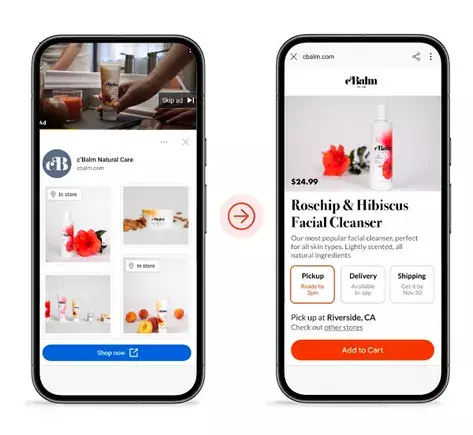In the rapidly evolving landscape of digital marketing, staying ahead of the curve is not merely an advantage—it is a necessity. Google’s recent unveiling of a suite of advanced advertising tools at its “Think Week” event signals a paradigm shift that could redefine how brands engage with consumers, especially during the critical holiday shopping season. Far from being a mere evolutionary step, these innovations serve as catalysts for a more immersive, responsive, and personalized advertising experience. For marketers willing to adapt, this presents a golden opportunity to boost visibility and drive conversions in an increasingly crowded marketplace.
What stands out most is Google’s strategic focus on seamlessly integrating AI-generated responses with traditional ad placements, thereby bridging the gap between automated assistance and targeted marketing. This intelligent synergy opens new doors for brands to connect with consumers at moments of genuine need—behaviors that are precisely shaped by the shifting online habits brought about by the holiday season. As competitors scramble to optimize their campaigns, embracing Google’s pioneering tools will likely distinguish those who capitalize on this technological leap from those left trailing in outdated advertising methods.
Transforming Search with AI-Integrated Ad Placements
One of the most compelling developments announced by Google is the test of dynamic ads within AI-powered overviews. These aren’t your conventional ads—these are embedded within AI-generated answers, creating a natural, less intrusive way for consumers to discover products and services. Imagine someone asking a question about home repair, and alongside the AI’s troubleshooting advice, a sponsored link discreetly appears for a trusted local plumber. Not only does this foster trust and relevance, but it also ensures brands stay top-of-mind during pivotal decision-making moments.
This innovation holds immense potential for holiday campaigns, where consumers are often researching gift ideas, travel plans, or home upgrades. A well-placed ad within an AI overview can subtly influence a purchase choice without disrupting the user experience. However, this approach is a double-edged sword: while the visibility of ads increases, so does the cost. Marketers must weigh the benefits of high-intent exposure against the unpredictability of whether users will scroll far enough to see sponsored results. Yet, the strategic value of maintaining brand presence in a landscape where organic AI responses dominate cannot be overstated.
Empowering Creatives with AI-Driven Content Production
In addition to smarter placements, Google is empowering advertisers with innovative AI-powered creation tools. The Asset Studio’s new text-to-image and text-to-video features promise to drastically reduce content production time. Imagine uploading a product image of your seasonal holiday collection, then instructing Google AI to generate a styled scene featuring models wearing your outfits—a process that once took hours or even days now takes seconds.
This democratizes high-quality content creation, allowing brands with limited resources to produce bespoke, captivating assets aligned with their brand identity. For example, an apparel retailer could generate in-the-moment visuals of their clothing in fitting seasonal scenarios, enhancing campaign relevance and emotional appeal. Plus, the batch generation feature means marketers can scale their creative efforts effortlessly, ensuring they remain agile amidst holiday demand surges.
With Google’s evolving AI capabilities, creative teams can focus more on strategic messaging, leaving the repetitive tasks of asset creation to the AI. This shift not only saves time but also reduces creative fatigue—a common challenge during intensely busy marketing seasons.
Next-Generation Ad Management and Targeting Capabilities
Google’s updates are also enhancing internal tools for better campaign management. The introduction of improved project sharing and in-progress ad reviews simplifies collaboration, enabling teams to iterate quickly and ensure alignment before launch. This agility is critical during the holiday rush when time is of the essence.
Furthermore, the advent of “brand-safe” text guidelines tied to AI content creation offers marketers increased control over automated messaging. This means that as AI takes on a larger role in crafting ad copy and headlines, brands can still uphold their tone, voice, and safety standards, ensuring consistency across all touchpoints.
Another noteworthy development is the integration of shoppable YouTube masthead ads. The now-verified ability to drive direct sales from YouTube’s premium placements provides a powerful extension for holiday campaigns. With billions of viewers tuning in during festive season sales, this format transforms passive viewing into active shopping, transforming YouTube from a mere branding platform into a direct sales channel.
Why Industry Leaders Must Act Now
The implications of these advancements are profound, but they also come with a caveat: the landscape is becoming increasingly complex. Brands that delay adopting these tools risk falling behind competitors who recognize the strategic advantage of AI-driven advertising. The increasing sophistication of Google’s AI integrations means that a passive approach to online marketing is no longer viable. Instead, proactive experimentation, iterative learning, and agile campaign adjustments will become the norm.
The question is no longer whether to incorporate AI tools into your marketing approach but how quickly you can leverage them to gain an edge. The early adopters who understand the value of these innovations—particularly in the critical holiday season—will set themselves apart, establishing stronger consumer connections and higher conversion rates. As the digital advertising arena continues to evolve at lightning speed, those who ignore the promise of AI risk missing out on the most lucrative opportunities of the year.

